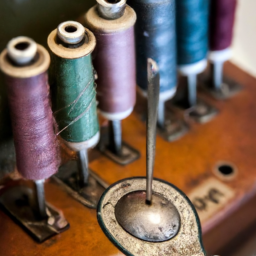
What is the history of the sewing machine?
The invention of the sewing machine revolutionized the textile industry and forever changed the way clothing and other items were made. Let’s dive into the fascinating history of this remarkable invention!
The Origins
The concept of mechanical stitching dates back to ancient times, with various forms of needlework employed across different cultures. However, it wasn’t until the 18th century that the first attempts at creating a mechanical sewing device were made.
In 1790, English inventor Thomas Saint created the first known sewing machine design. It had a wood frame and used a handheld awl to pierce holes in the fabric. Although Saint’s machine never became commercially successful, it laid the groundwork for future inventors.
Patent Wars
In the early 19th century, several inventors developed different sewing machines, each providing unique features and advancements. However, it was difficult to determine who actually invented the first working sewing machine, leading to what became known as the “patent wars.”
In 1830, French tailor Barthélemy Thimonnier patented a machine that resembled Saint’s design. Thimonnier’s machine used a hooked needle to create a chain stitch and was successful enough to produce uniforms for the French army. However, outraged traditional tailors eventually destroyed his factory and sewing machines, fearing that the technology would put them out of business.
American inventor Walter Hunt is also known for his contributions to sewing machine history. In 1834, he developed a machine with an eye-pointed needle that implemented a lockstitch. However, he failed to patent his invention, resulting in others modifying his design without credit.
The Howe vs. Singer Battle
One of the most significant breakthroughs came in 1846 when American inventor Elias Howe patented his sewing machine. Howe’s machine used two threads to create a lockstitch, which produced a more secure and durable stitch. Although his machine was an improvement, it didn’t gain widespread popularity due to various limitations.
It was Isaac Merritt Singer, an American entrepreneur, who revolutionized the sewing machine industry. In 1851, Singer patented the first practical and commercially successful sewing machine. His machine featured a foot pedal, making it easier to operate. Singer’s company, Singer Manufacturing Company, became one of the most influential sewing machine manufacturers in history.
Modern Innovations
In the late 19th and early 20th centuries, sewing machines underwent significant advancements. Electric sewing machines were introduced, eliminating the need for manual operation. Zigzag stitching, buttonhole stitching, and other specialized stitching techniques were also added, expanding the machine’s versatility.
In recent years, computerized sewing machines with advanced features such as touch screens, automated embroidery, and precise stitching patterns have become increasingly popular. These machines offer a wide range of options and make sewing more efficient and accessible for both professionals and hobbyists.
The Legacy
The sewing machine’s impact on society cannot be overstated. It revolutionized the garment industry, increasing production speed and reducing costs. It also allowed people to create clothing at home, promoting self-sufficiency and creativity. Sewing machines have had a profound influence on fashion, allowing designers to bring their ideas to life quickly and efficiently.
Today, sewing machines continue to evolve, combining traditional techniques with modern technology. They are not only essential tools but also symbols of human ingenuity and the enduring spirit of invention.




